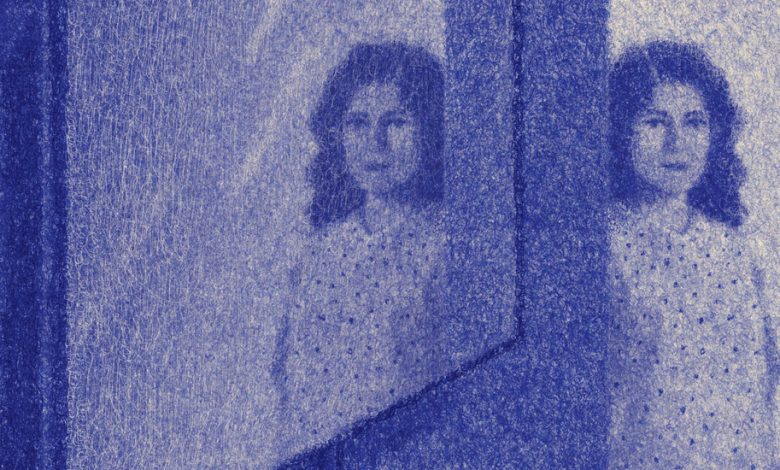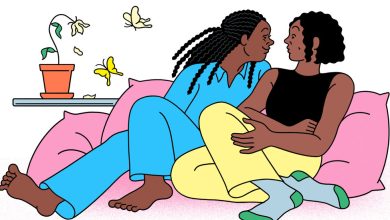A Previvor’s Tale

A storyteller wants to know the future. That’s our job, after all: to map out the plot. We must keep a bird’s-eye view of the whole saga in mind — beginning, middle and end — while we make our way through each individual moment.
This narrator’s drive to predict the future has always been so compulsive in me that it’s manifested in daily actions ranging from the practical (to-do lists, calendars) to the goofy (astrology, tarot). What happens next, I ask the cards, yearning for certainty, for control over my own story.
Before I got married, all I did was wonder if I would ever get married. And soon after my wedding (a firm conclusion to that question), I visited a gynecologist, hoping to tackle the next big plot point. I was 35, a professional screenwriter, and I had always wanted children.
Your Questions About Menopause, Answered
What are perimenopause and menopause? Perimenopause is the final years of a woman’s reproductive years that leads up to menopause, the end of a woman’s menstrual cycle. Menopause begins after a woman’s final menstrual period.
What are the symptoms of menopause? The symptoms of menopause can begin during perimenopause and continue for years. Among the most common are hot flashes, depression and anxiety, genital and urinary symptoms, brain fog, and skin and hair issues.
How can I find some relief from these symptoms? A low-dose birth control pill can control bleeding issues and ease night sweats during perimenopause. Avoiding alcohol and caffeine can reduce hot flashes, while cognitive behavioral therapy and meditation can make them more tolerable.
How long does perimenopause last? Perimenopause usually begins in a woman’s 40s and can last for four to eight years. The average age of menopause is 51, but for some it starts a few years before or later. The symptoms can last for a decade or more, and at least one symptom — vaginal dryness — may never get better.
What can I do about vaginal dryness? There are several things to try to help mitigate the discomfort: lubricants, to apply just before sexual intercourse; moisturizers, used about three times a week; and/or estrogen, which can plump the vaginal wall lining. Unfortunately, most women will not get 100 percent relief from these treatments.
What is primary ovarian insufficiency? The condition refers to when their ovaries stop functioning before the age of 40; it can affect women in their teens and 20s. In some cases the ovaries may intermittently “wake up” and ovulate, meaning that some women with primary ovarian insufficiency may still get pregnant.
The doctor asked me some standard questions about my health and family history, and when I told her my paternal grandmother had died of breast cancer at age 38, she advised me to take a genetic screening test, which was conveniently available in her office. Two weeks later, driving to work — as a writer on the TV show “The Affair” — I got a phone call telling me the future. I had a BRCA1 hereditary gene mutation, which meant I had an 80 percent chance of getting the aggressive breast cancer that had killed my grandmother when she was just three years older than I was then, and a 40 percent chance of developing an undetectable ovarian cancer that was likely to be fatal as well. It would be smart for me to have all my sexual organs (breasts, ovaries, fallopian tubes, possibly uterus) removed as soon as possible — but first, I should hurry up and get pregnant. Click. There’s the plot. Enough for multiple seasons. Be careful what you wish for.
I remember screaming at the top of my lungs on my way to get my first mammogram a few days later. The story of my life was outlined for me now — only problem was, it was a horror movie. They called me a “previvor,” and from a medical risk-management perspective, there was no difference between me and someone with actual early-stage cancer. I also remember, around the same time, reading a book that said that for a woman, struggling with infertility is as stressful as receiving a cancer diagnosis — and, though in fact I had neither of these conditions (I was never sick, nor was I infertile), I was nevertheless now handling both. My only diagnosis was a prediction — but if you’ve been told the future, and it’s bad, then you feel doomed.
Every month I tried, and failed, to get pregnant, while at the same time undergoing an ad hoc program of high-risk cancer surveillance with doctors on both coasts (the TV show required me to go back and forth). It turns out that constantly moving across the country for your high-pressure job while getting frequent breast M.R.I.s and researching prophylactic mastectomies as well as hormone replacement therapies for imminent post-surgical menopause does not create the ideal conditions for an anxious, overly caffeinated 35-year-old to fall into that luscious state where her womb softly accepts a fertilized egg. It was, however, certainly a tight story. I was in a race against time, trying to undo a Gordian knot of ovulation schedules and biopsy results with 50 guns held to my head. I had more stakes and consequences on my hands than a book of Greek myths. In the midst of all this, I wrote a pilot in which Emily Dickinson finds herself riding with Death in a spooky carriage. It was autobiographical.
And then, in 2017, right around the time I sold the show about Dickinson, my husband and I did in vitro fertilization. Two healthy embryos were transferred into my womb during the Great American Solar Eclipse. As I watched the moon’s shadow blot out the sun on the anesthesiologist’s iPhone, I thought, God, this better work, because we aren’t going to get another moment as well–scripted as this one. And I suppose the great network executive in the sky was convinced, because I got pregnant with twins. My little sun and moon. The organs that would be ripped from my body as soon as these babies were born had done their job.
Thus began five eventful, plot-heavy years where I crossed the following items off my to-do list: Write, produce and deliver three seasons of a deeply personal TV show for a brand-new global streaming platform; carry twins; give birth to twins (36 hours of labor followed by an unplanned C-section); move back and forth across the country at least eight different times with two infants, and then toddlers, into myriad apartments and child care situations; have my ovaries, fallopian tubes, uterus and cervix removed, thus putting me into immediate menopause; and, as a grand finale, undergo a double prophylactic mastectomy and reconstruction while releasing the final season of “Dickinson.” Oh, and survive a pandemic. (Did I mention the twins?)
As I lay in the bed outside the operating room on Dec. 10, 2021 (Dickinson’s birthday — an accident of scheduling that felt a touch “on the nose” from a screenwriting perspective), scrolling through fan reactions to that week’s episode whilewaiting for the nurse to wheel me in to have my genetically flawed, yet still perfectly nice-looking, breasts removed, one of the real Emily’s lines came into my head: “My life closed twice before its close.” My life, this story I’d been told in advance and had then lived through, moment by excruciating moment, was closing. It was all over. I’d gone from maiden to mother to crone in seven years. The complete arc of a woman’s life was behind me. I was 41 years old, and the credits were rolling.
Now I’m here, a year later. I’m healthy, and still employed by the global streaming platform. I have lovely fake breasts, and I’ll never need another mammogram. My first TV show is over. My kids are 4 and a half — they will start kindergarten next year. The other night my son, in the bath, said, “Mom, are you going to be around when I’m a grown-up?” No one can predict the future, but I have no reason not to think that the answer is yes. I’m no longer riding with Death in that carriage. (He’s around somewhere, of course, but he let me hop out and walk home.) From this moment, the rest of my life stretches out before me, unknown. No predictions. No plot. What a relief.
Alena Smith is the creator of the streaming series “Dickinson” and the author of “The New Sincerity,” “The Bad Guys” and other plays.




